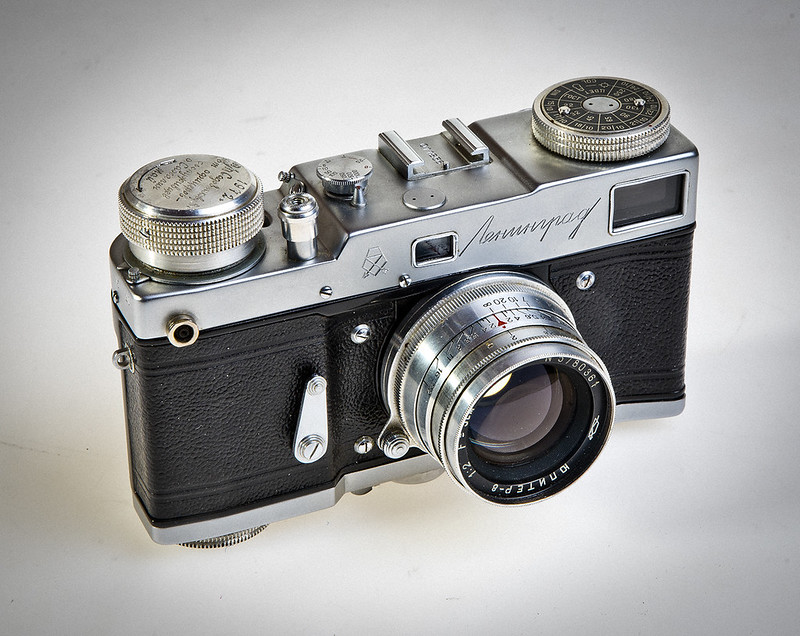That's my Leningrad, a fully working and quite unique example, due to it's dedication hand-made inscription. I think my camera was made by GOMZ in 1958 or 59.
First we talk about the inscription, in cursive Cyrillic and that I have translated as I could thanks to the internet:
"1972р
П/П Садовникову ВП
от офицеров -
сослуживцев
о. Сахалин
май"
That is: "In 1972, for P./P. Sadovnikov V.P., from his fellow officers, Sakhalin Island, May."
It is obviously a camera given as a present to a Soviet army officer by his colleagues, all from the garrison of Sakhalin Island in northern Japan. The Leningrad was one of the highest quality cameras in the USSR, although this was manufactured about 12 years before 1972. Therefore it was a gift of great prestige. The owner is V.P. Sadovnikov, clearly a Soviet officer himself.
Other elements not so clear are the beginning and the end of the text. This ends with the word "May", which I can only interpret as the present being given on May 1, which is quite logical in the Soviet world and even more so in the army, as it was a day of parades and celebrations. The most difficult to see the meaning of is the abbreviation П / П, that is, P.P. Although I have not been able to confirm this, it may refer to the Soviet rank of Lieutenant Colonel, as this was a podpolkovnik (подполко́вник), and pp seems like a logical abbreviation.
The interesting question here is that I have come across a Soviet official who corresponds to this name and surname: Valentin Pavlovich Sadovnikov (Валентин Павлович Садовников). This is a major-general born in 1938. In 1979 he comanded the 42th Armoured Division, and between 1983 and 1985 he commanded the 8th Armored Army!! Then he retired. It seems bold, but the surname and patronymic fully coincide with the person receiving this camera. Could it be that this officer was a lieutenant colonel in Sakhalin in 1972 and that 11 years later he had promoted to general and commanded an armored corps? Ah ...


As I said before, the shutter works wonderfully well, and although the rangefinder is a bit displaced (I have managed to correct the vertical misalignment, but not the horizontal, that miniature screw is so hard to reach without disassembly...), it could take nice pictures. I'm quite used to older, no-rangefinder cameras (Kodaks Folding Pockets etc), so focusing as a guess is not so difficult.
Some examples:


















